#john rhys davies my absolute short KING!
Text
Rating Rings of Power Characters: Elves Edition!
(As of Episode 5)
Welcome to the show where you get to hear my opinions which nobody asked for!
Are you ready?
Let the frivolity commence!
Aaaaand first up, we have the Elves! Starting with....
Galadriel:
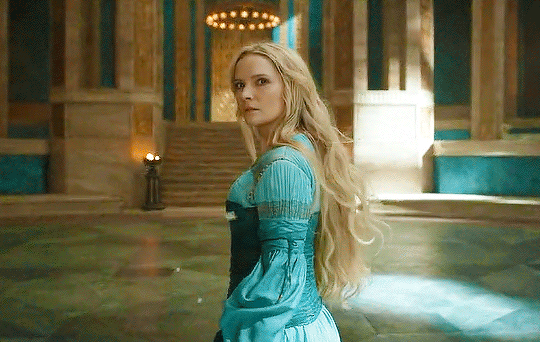
Elegant. Graceful. Proud. Restless. A fighter.
Everything I expect and look for in a young Galadriel. 10 points.

10 points for putting baby Elrond in his place. She has seen shit, and no patronizing from Elrond (who literally has not seen said shit) is making her forget that.
Another 10 points awarded for the iconic line and delivery of "There is a tempest within me!"

20 points for slapping that man in the ass with a sword. That had me howling with laughter.
-5 points for her lack of husband. Seriously, where the hell is Celeborn? Minus another 10 for being shorter than Halbrand. Our woman should be like 6 feet tall. It doesn't matter if Morfydd Clark is only 5'3. They made John Rhys-Davies (Gimli) who is 6'1 look short next to the rest of the OG cast. They could have done the same here and made her look tall. Big boo.
Galadriel comes in with a total of 35 points.
Next up, we have.....
Arondir:

Quick. Agile. Diplomatic. Just. Kind. Serious. Handsome.
This guy has it all. Solid 20 points for a great original character.

Another 10 points for his subtle expressiveness. He's pretty closed off, but the way he looks at Bronwyn.... *swoons*
10 points for the face he makes at Adar when Adar asks him if he is from Beleriand from "the mouth of the river".
*derisive laughter*
Arondir's incredulous face says it all. There are roughly 35 rivers in Beleriand, which drain into around 4 mouths, all of which have some settlement of some kind. Like, I know the writers probably mean he's from the Havens of Sirion, but that was still the elvish equivalent of asking an American, "Are you from America, from 'the state'? I've been there once, you know".
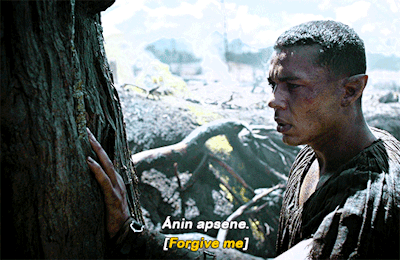
-5 points for speaking Quenya. Not a single Silvan Elf born in Beleriand would be speaking Quenya, ever. Elu Thingol banned the language from being spoken throughout the realm when he learned of the horrors of the First Kinslaying. It's an absolutely massive faux pas on the writer's part.
That has Arondir sitting pretty on 35 points.
Next, we have ....
Celebrimbor:
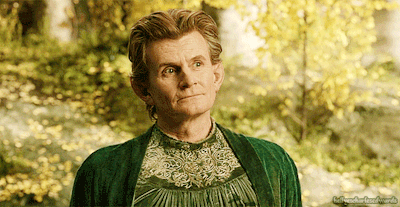
He's..... old?
That's -5 right off the bat. He's not the oldest elf, so why does he look old? I mean, he also saw some first-age shit, but so did everyone else here. The writers do realize that he's younger than Galadriel, right?
Otherwise, he's a little sassy and ambitious, but relatively a nice guy. +10 points for Celebrimbor.
That leaves Celebrimbor with ..... ouch, 5 points. You know what will make you popular my dude? Forge some rings. What could possibly go wrong?
Next up is.....
Gil-Galad:

+10 points for looking exactly as Gil-Galad should, but what did they do to his character?
Since when did Gil-Galad become.... dare I say it... a dick?
The Gil-Galad I know was kind and benevolent, and overall a gentle ruler who always sided with Galadriel. I was not expecting a sneaky, manipulative, Mithril-hungry, ship-your-best-mates-off-to-Valinor, arrogant bastard, and I do not approve.
I mean, where is the man worthy of the "Gil-Galad was an elven king" poem? The writers so did him dirty.
-10 points.
That leaves Gil-Galad with a great big 0. Shape up, laddy.
Moving on to....
Elrond:

He is a perfect sweet baby. An angel. Kind. Polite. Understanding. He has a lot to learn. The character is so good I can entirely excuse the hair.
10 points for Elrond!

His bromance with Durin is iconic. Another 10 points.
He is also pure and loyal to his friends, and he is starting to learn to do both what is right for his friends, and what is right for his people. Oh, how this series is going to crush him. Another 10 for our poor baby.
That has Elrond sitting on a nice even 30 points.
Next up....
Elros:

Lore checks out. +10.
Just tell me, what idiot decided Elros gets a beard? Tolkien makes it very clear that half-elves don't get beards and it takes many generations for their descendants to acquire that mannish trait (see the princely house of Dol Amroth). -5 points.
That leaves Elros with 5 points as well. You need to shave, my dude.
Aaaaand, last but not least.....
Finrod:

Right off the bat, wtf did they do to his hair?!? Terribly unsexy. -10 points.

And what exactly happens with his death? Finrod dies in the dungeons of Sauron, not on the fields of battle. While the former (and correct version) would perfectly explain Galadriel's extreme hatred of Sauron, the show heavily implies the latter. -10 for such a vague corruption of his backstory.
+5 for his absolutely awesome quote, "Sometimes we cannot know [the light] until we have touched the darkness."
Finrod finishes with a grand..... -15 points.
AND THE WINNER IS.......
Galadriel and Arondir for a tie!

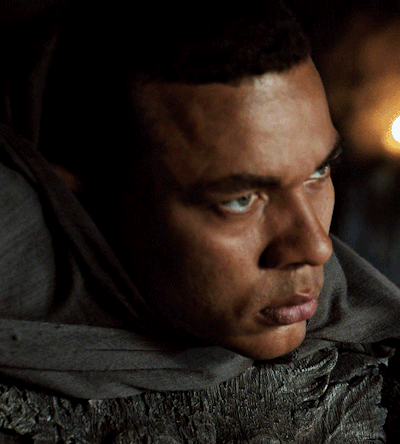
Elrond comes in a close second!

Tune in next time for Rating the Númenóreans!
#galadriel#arondir#elrond#gil galad#celebrimbor#finrod#rings of power#lotr rings of power#the rings of power#lotr on prime#rop elves#lotr elves#lotr fandom#galadriel is a badass#arondir is amazing#elrond is loveable#celebrimbor is just kinda there#wtf is gil galad doing#what the hell did they do to finrod#who gave elros a beard
7 notes
·
View notes
Text
damn i forgot gimli is in indiana jones what the fuck
0 notes
Text
Lord of the Rings: The Fellowship of the Ring (2001); AFI #50
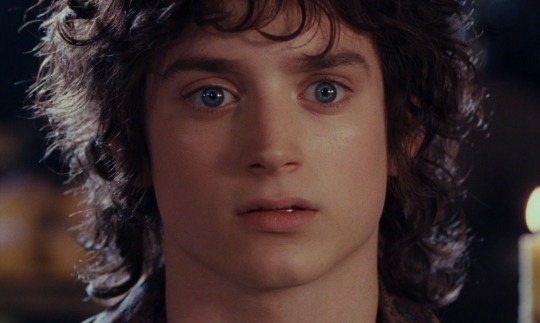


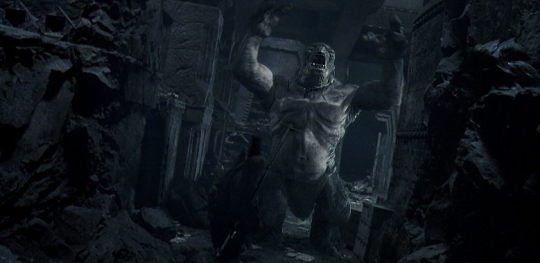
The current movie for review from the AFI top 100 is the most recent of the films, Lord of the Rings: The Fellowship of the Ring (2001). This was the introduction of director Peter Jackson to much of the mainstream American audience despite him having a 20 year history of film making in New Zealand. The film is beautiful in so many aspects, from the special effects to the cinematography to the sets creating the world of Middle Earth. The film received 12 nominations at the Academy Awards and received 4 of them, a feat unheard of for an epic fantasy film. This is also the only “incomplete” film on the AFI list because there are no other “too be continued” stories. There are some films that are first and second parts (specifically The Godfather 1 and 2), but this is the only one that intentionally stopped with intent for the story to pick in the next film. With that being said, the sheer number of characters and the intended incomplete nature of the film makes it almost impossible to summarize without just going scene by scene. There are 100 movies on this list and I am not going to set any precedence that I will be doing that, so here is a very brief synopsis of what happens in this film without diving into too much of the lore concerning the rest of the trilogy or The Hobbit:
SPOILER WARNING!! I DON’T KNOW WHY IT IS NECESSARY ON THIS ONE, BUT I DO IT EVERY TIME AND I WANT TO BE CONSISTANT!! IF YOU HAVEN’T SEEN THIS BY NOW OR ARE UNFAMILIAR WITH THE STORY, THEN YOU ARE LIKELY VERY YOUNG, LIVE UNDER A ROCK, OR PURPOSEFULLY AVOIDING IT!!! YOU HAVE BEEN WARNED SO I DON’T WANT TO GET ANY NOTES ON THIS ONE!!!
So here is the general outline, there was an evil guy named Sauron that gave out rings of power to the Elves, Dwarves, and Humans in a realm called Middle Earth. This land is a fantasy realm that has a mix of Dark Age castles mixed with monsters and human like races. It looks strangely like New Zealand through a lot of the country side. Coincidence I am sure. Anyway, Sauron tricked the different races because he kept for himself one ring to rule them all and bind the ones wearing the rings to him. This did not go over well so the humans, elves, and dwarves rose up and fought Sauron and his armies and were able to get the master ring during battle. There was a chance for them to destroy the ring but human corruption prevented this and the ring was eventually lost. It eventually ended up in the hands of a man that kept it close and allowed it to suck away his life until it was stolen by a small human-like creature named Bilbo Baggins. The ring was taken on many adventures (see The Hobbit films for this story) and it gave this little hobbit prolonged life, but it also became an addictive burden. Bilbo decided to go off and leave the ring for his nephew and this is where the story begins. I know, it’s a lot.
A wizard named Gandalf (Ian McKellen) comes to the hobbit village as Bilbo is leaving and makes sure the ring is left in the hands of the nephew Frodo (Elijah Wood). The wizard confirms the ring is the one that rules them all and reveals that Sauron is regaining power and wants the ring. For the safety of the shire, Frodo must take the ring to Rivendell, home of the Elves, to figure out what must be done. Gandalf has to take care of some business so some other hobbits - Sam (Sean Astin), Merry (Dominic Monaghan), and Pippin (Billy Boyd) - get wrangled into the journey and the group of four go off to a local human town to meet Gandalf and continue forward. This short trip proves treacherous as the 9 humans that were given rings of power had been corrupted and turned into Nazgul that are attempting to track down the little group of hobbits. Gandalf does not show up, but the group run into a ranger named Strider at the human tavern and he helps fight off the ring wraiths. With the help of his elf girlfriend, Arwen, the group are able to make it to Rivendell where they are presumably safe for the time being.
A meeting is held at Rivendell and representatives of the different races all show up to decide what must be done. The ring must be destroyed so a fellowship to transfer the ring to Mount Doom is formed. It is made up of the four hobbits, Gandalf the wizard, an elf named Legolas (Orlando Bloom), Strider the Ranger who is actually a human king named Aragorn (Viggo Mortenson), a dwarf named Gimli (John Rhys-Davies), and another human named Boromir (Sean Bean). I have seen enough movies with Sean Bean as a side character to know that he is for sure going to die. It is only a matter of when.
So the group heads off toward Mount Doom and initially start by taking a path through snowy mountains but have to turn back and instead decide to go under the mountains. The dwarf is excited because he can visit his cousin who is king under the mountain. Alas, all they find is skeletons and an evil race created by Sauron called orcs. This race also seems to have other evil creatures enslaved including a cave troll. The Fellowship is chased through the bowels of the mountain until the orcs suddenly back off and the group finds something even worse, an ancient evil called a Balrog. Gandalf takes on the creature at a stone bridge and screams the now memed words “You shall not pass!” The Balrog falls into a pit but drags Gandalf down as well, reducing the number in the group by one wizard.
The group mourns the loss very briefly (and dramatically) before traveling to an elven forest where Frodo is told by a queen that he will have to take on the quest alone and that one of the fellowship will betray him. They continue on and it turns out that a wizard named Saruman that was corrupted by Sauron (confusingly close in name, I know), has created super buff orcs called Uruk-hai (pronounced “Orick Eye” all blended together) to hunt down the party. Boromir tries to take the ring from Frodo but immediately makes up for it by sacrificing himself to protect the hobbits from the super orcs. Sean Bean was kind of a bad guy and was killed. What a surprise. That actor really needs to find different roles or he is going to spend his entire career being type cast.
Anyway, Frodo and Sam break away from the group to go off on their own, the other two hobbits are captured and taken by the orcs, and then Aragorn, Legolas, and Gimli decide to track everybody down. To be continued.
This probably seems like quite a short synopsis for a 3 hour movie...but legitimately the movie is a visual spectacle in which not a lot happens. Most of the movie is traveling, fighting, introducing the lore of the world, and introducing characters. Not a whole lot of plot progression in this particular movie, but it sets the stage for the second film to be nothing but battle and progression (an hour long battle of Helm’s Deep which is amazing), while the last one is nothing but battles and resolution of every story line. It is an incredible trilogy and this is only the beginning and it had audiences drooling for more.
In fact, Peter Jackson films set the standard for special effects for the early 21st century. His team took home the Oscar for best visual effects in 2001 for Fellowship of the Ring, in 2002 for The Two Towers, in 2003 for The Return of the King, and in 2005 for King Kong. No film series with consecutive releases has done this except Lord of the Rings (not even with Star Wars, Marvel, and DC universe films coming out constantly). The series really is something special. Attempts had been made to tell the trilogy as an animated movie, but no drawings could do the world justice. It took advanced computer graphics, motion capture technology, an expansive New Zealand countryside, a quirky director that had envisioned this world his whole life, and a dedicated cast and crew that was fully committed to the project. It is an amazing piece of filming.
If I have any complaints, it is that there is some really corny drama. The amount of times that Elijah Wood overacts in pain or despair is more digits than I have. Especially when the group is mourning the loss of Gandalf...it is kind of embarrassing. It is that “inconsolable parent who lost a child” acting with scream crying and shouts of “Noooooo!” It is all the hobbits, too, which doesn’t help that they are the size of children and are having a despair tantrum. Luckily they keep going and that is a one minute scene, but still it is embarrassing. Also, Frodo is stabbed and presumed dead twice. I can see why there were no nominations for best actor because it was not the best acting.
It is all made up for by the incredible battles. For me, it is the chase under the mountain with the orcs and the cave troll and the balrog. That is about 30 minutes of constant fight or flight that left me short of breath. I realized I kept forgetting to breath I was so mesmerized by the constant intensity. There is also a good amount of comedy since the hobbits are generally peaceful farmers and they don’t know how to (or want to) have adventures and keep messing things up. Pippin and Merry keep touching things that they shouldn’t and it brings all kinds of trouble. I think it is one of them that knocks some armor into a well that catches the attention of the orcs under the mountain.
Two specific scenes that I found memorable in that they are burned into my brain forever were the Nazgul fight and the appearance of the cave troll. The Nazgul are absolutely terrifying in that they have no face and have only one intent: kill whatever they are hunting. A good comparison would be to Dementors in the Harry Potter universe. The Nazgul are like Dementors with swords and armor. What is worse, Frodo can use the one ring to make him invisible, but it puts a target on him for the Nazgul and they come straight for him. They idea that you can’t hide from this evil and attempting to will make you stand out more is kind of horrific. I found the Nazgul truly disturbing. The cave troll is just awesome and huge. At no point was I worried for the team on this occasion because the wizard, elf, dwarf, and humans seemed undefeatable. It was more of curiosity about how they were going to handle this challenge. The detail of filming all the actors and sets so they were affected by the troll made the huge beast and the threat it posed in an enclosed space seamless.
There was some question why this movie was on the AFI list and the other movies in the trilogy were not, especially with the third film winning 10 Oscars including best picture. It is because this was the watershed film that made the others possible. I got to see the film in the theatre and it was an experience like no other. I cannot think of a movie that had created such a complete fantasy world like LOTR and it made for a truly cinematic experience. I generally do not like movie theatres because people around me whom I have no control over can affect my experience and I am not normally willing to pay for that. However, the theatre I was in had tiered level seating that was graded enough so that nobody blocked my view and ample leg room that also prevented kicking from behind. It was a thing of beauty and I went and saw the other two films in the theatre as well. It was amazing.
So does this film deserve to be on the AFI 100? My goodness, I would think less of the AFI if it wasn’t. It changed audience expectations of what a movie could be and set the tone for the new millennium as far a big budget cinema. Would I recommend it? Please, I own it. If you come by my place and you haven’t seen it, then I will be happy to put aside 3 hours and watch it again with you. It is the easiest epic film to get through, in my opinion, and I don’t think you will be sorry to give up the time. Just a fantastic movie.
#lord of the rings#the fellowship of the ring#peter jackson#Elijah wood#viggo mortensen#liv tyler#sean astin#ian mckellen#visual effects#Oscar winner#afi film list#film review#nazgul#cave troll#computer graphics#introvert#introverts#theatre experience#fantasy#epic films
23 notes
·
View notes
Text
I went to the Museum of the Bible
Okay, buckle in, because this is gonna be kind of a lengthy post. My mom got free tickets to the highly controversial new Museum of the Bible in DC and I, with heavy misgivings, decided to come along and see what was up. I have to say, I thought it was a lot better than I expected, though I am still suspicious and cynical of several aspects of the place. So here is my detailed review! Here's what you need to know about the museum first: 1. It was founded and funded by Steve Green, the President of Hobby Lobby, aka the company that went to the Supreme Court because they didn't want to cover employees' birth control, saying it went against their religious beliefs. 2. He was also fined $3 million for smuggling artifacts from Iraq (which did not appear in the museum's collection). 3. The museum is technically non-sectarian (though with a Protestant bias), and does not address hot-button issues like evolution/creationism, abortion, LGBTQ+ rights, or how the Bible "should" be interpreted. Its galleries include tellings of the stories from the Bible, the history of the compilation and transmission/translation of the Bible, and the impact of the Bible on history and culture. It always hints at a Christian interpretation but does not outright evangelize. Some people may find this claimed non-political and nonsectarian interpretation more insidious than an outright Christian oriented museum. 4. The museum is free, but with a suggested donation. I would personally not suggest donating anything if you're interested in checking it out so as not to put money in the Hobby Lobby Guy's pockets, but that's just me. Now, I have to address my own personal biases. I am a Protestant Christian (United Methodist, to be specific), but I'm also strongly opposed to what constitutes contemporary "American Christian culture." I'm a believer not only in God but in human rights, evidence-based science/evolution, separation of church and state, charity, equality, and empathy. To me, these values are compatible with studying Jesus' teachings, and I'm deeply critical of people who use Christianity to justify selfish and narrowminded decisions. I also am an elementary-age Sunday school teacher who likes to emphasize the importance of Biblical literacy in self-professed Christians, which this museum champions (you'd be amazed how many Christians aren't actually familiar with the Bible), and in studying not only the stories, but the themes and lessons behind them (which this museum does not do. It allows guests the freedom to interpret the material according to their own beliefs- again, some might like this and some might dislike it). This museum is huge. We were there for about five hours and still didn't see everything. It was also absolutely PACKED with guests. The line to get in snaked down the block, and there were some long lines to get into the "hottest ticket" exhibits. We started off our day in the most popular, multi-media exhibit, The Hebrew Bible, which is a mix of videos and walk-through visuals with exciting lighting, animation, and voiceover, telling the narrative of major Old Testament stories. This exhibit is a pure storytelling "experience" and does not display any artifacts or purport to be a factual account, which I actually love because it is not claiming that all of these accounts are literally true or trying to show historical evidence. It's a little cheesy but less cheesy than you might expect- it feels like an elegant Disney World attraction but with a more artistic and slightly more abstract style. I especially liked the burning bush (the voice of God was represented as multiple voices in unison, at least one of them female), the white room full of rainbow light after the ark, the Red Sea made of string and projected waves, or the watercolor style of art of the Judges/Samuel movie. This experience is as non-controversial as possible, though the one issue is that it portrays the entire Old Testament as a consistent story about how God's people moved closer to and farther from God throughout history, fluctuating in loyalty, which I've heard is contrary to how the Tanakh is generally interpreted. This also implies that the New Testament completes "the story," which shows a Christian bias. The next exhibit was a recreation of the village of Nazareth, which WAS cheesy and Disneyesque, but fun. It felt like the museum at Jamestown Settlement, where you can walk in the little houses and see how people lived in another time. There were living interpreters there, and I liked that the people who played the villagers were racially diverse. There was a mikvah, an olive press, a temple, and typical Jewish homes. Less diverse was the short movie about John the Baptist and King Herod, who were both played by white actors- in fact, Herod was John Rhys-Davies (aka Gimli) in all his bellowing rolled-r scenery-chewing glory. He seemed to be having a grand old time. The New Testament movie was poignant but a slightly more cartoonish style of animation than the Old Testament films. Its art style reminded me of the illustrations on Pottermore. There are a lot of contradictory versions of stories in the Gospels, which was not acknowledged in this movie, but they kind of found a way around this by having the movie told from the perspectives of different people who encountered Jesus in first person (John, Saul/Paul, Mary Magdalene, Thomas, a centurion at the crucifixion, etc), showing them as varying accounts rather than one narrative. I know about the differences between the Gospels, but not everyone does, and this could be interpreted as an oversimplification. One thing I loved about this movie was that they never showed Jesus' face. They allow the audience to imagine him as they see fit. My family got lunch after this. There's a big restaurant called Manna on the top floor that serves middle-Eastern inspired foods and it was quite good. (There are vegetarian, vegan, and kosher options.) I had a platter with falafel, salad, and pickled vegetables, as well as some mango juice. This place gets CROWDED and there are long lines, but you can't re-enter the museum once you've exited unless you get back in the big queue around the block, so you can really only eat here or at the coffee shop downstairs. There's also a biblical garden and observation deck up there. Next, we went to the floor that talks about the history of the Bible, and this is where things get complex. I am less knowledgeable about this stuff than the actual text of the Bible itself, so I can't tell you what was of questionable accuracy here and what was legit, but this floor was definitely poised as being more serious and academic, while the one above it was more about narrative and entertainment-- so obviously, I was side-eying it more. This exhibit is definitely slanted toward the concept that the Bible has been transmitted and translated throughout time with remarkable accuracy, but also explores the differences, inaccuracies, and variations between different Bibles. It starts with a collection of ancient tablets and documents. I have read that some of these have questionable provenance and authenticity, especially fragments of the Dead Sea scrolls. Some of the signage alludes to these questions, some does not. Many items are on loan from other institutions, while others are replicas and facsimiles of items in museums like The British Museum (always labeled as such). The articles of the museum I've read are very severe about questions of authenticity/provenance, partially because of the Hobby Lobby scandal, but also because this is such a new museum. Museum practices have changed over time, and many of the artifacts at the British Museum and the Met are unethically acquired, too. Bear that in mind when visiting any museum (I could rant to you about the Parthenon marbles!) Still, a new and expensive museum like this one should be more careful. The most interesting ancient items in this exhibit were accounts from non-Jewish ancient cultures that told a different version of events than the Bible-- a king claiming to have killed a Hebrew King and thanking his own gods for the victory, while the Bible says that God punished that Hebrew King for not being devoted to him. It was cool to see two sides of the same story. But what I REALLY loved here was the collection of Bibles from the Middle Ages and Renaissance, because I love old books. Like, I took a class at the Folger Shakespeare Library about this stuff. There was a Gutenberg Bible, some absolutely gorgeous illuminated manuscripts (including one belonging to Henry V's great-grandmother and in immaculate condition), Tyndale Bibles, one of the very first edition of the full Bible in English... It was sobering to see that Henry VIII commissioned churches to display Bibles in English two years after Tyndale was executed abroad for translating the Bible into English. My favorite thing in the entire museum was a "Wicked Bible"- a reprint of the King James Bible that accidentally left out a crucial word and said, "Thou shalt commit adultery." Needless to say, most of them were destroyed, and the printers got in trouble, but this one survived. I also liked the small exhibits on which books were included in which versions of the Bible and which were left out/ considered apocrypha. The "Drive Thru History." introductory movie here is incredibly annoying and trying too hard to be cool, by the way, so feel free to skip that one if you go. It does a disservice to a serious collection of books. I also popped into the second floor exhibits before I left, but I didn't stick around for long. This has exhibits on the Bible's impact on US history and on culture in the world. The culture one honestly was so overwhelming and sprawling that it hurt my brain (especially since I had already been in the museum for 4.5 hours), but I did get a kick out of seeing Elvis Presley's Bible. This might be the most propaganda-Y part of the museum, but I didn't take much time to find out. There's also a video booth where people can share their own feelings or experiences about the Bible. The American history section was interesting and surprisingly daring, though. It talked about how the Bible was used to back up positions on different sides of issues through history- pro- and anti- slavery, women's rights, whether to be independent from England. It showed that the Bible has been used for good and bad throughout history and has some cool documents on display- a first edition copy of Uncle Tom's Cabin, Elizabeth Cady Stanton's "Women's Bible," the handwritten manuscript of the Battle Hymn of the Republic. The displays let the public vote on tricky questions like whether they agree with Thomas Jefferson's decision to cut up the Bible and keep the parts that he felt applied as advice to daily life. (73% say no.) Also, in a section about politicians making reference to their personal faiths, there is a clip of Barack Obama singing "Amazing Grace." Nice to see that this museum explicitly denies the "Obama is a secret Muslim" conspiracy. There were more exhibits that I didn't get to see, including some traveling exhibits on loan from the Vatican, an Israeli museum, and a Bavarian museum. They also have a full-stage production of the Broadway musical "Amazing Grace." I will say, I gave a hard side-eye to the large gift shop, through which visitors exit, with the "Museum of the Bible" logo branded on everything from mugs to t-shirts to sunglasses. I would have preferred a tasteful bookshop with maybe a few knick-knacks like cross necklaces and Noah's Ark toys, but I guess I'm an old party-pooper. Overall, I actually had a lot of fun at this museum and got to see some very cool and rare books, but I also was naturally more critical toward this museum's decisions than I normally would be when visiting a tourist attraction. I was happy to see a crowd diverse in age and ethnicity who were discussing the exhibits rather than just zooming through (I did see one guy in a MAGA hat, though- frankly, I thought there might be more). The employees were all really nice and helpful even though the place was outrageously crowded. Would I recommend visiting this museum? Maybe! I think I would recommend it to Christian people who are already knowledgeable about the Bible and willing to think critically about what they read and see. I think it would be a good place to bring kids (mid-elementary and up) and talk seriously about some of these topics and controversies. The kids in my Sunday school class seem to have a hard time remembering sequence of events in the Bible, thinking Moses was the same time as Jesus, calling King David a 'Christian,' etc. This might clarify some stuff. I saw a lot of little kids there, and they were having fun, but I feel like I wouldn't take kids that young there because they wouldn't be able to understand the more complex topics. I don't want to just give them candy-coated pretty stories! I probably would not recommend this museum to people who come from very different faith traditions or none at all, whatever this museum's attempts at secularity. I will say, I'm unsure what the Museum of the Bible's agenda is, because it certainly doesn't seem built to convert anybody. The more cynical part of the says it's built to spread the message that the Bible is so important to history and culture that it should be taught in schools. The less cynical part says that it's built to encourage Christians to explore and become more knowledgeable about their faiths, because we're from a time when the majority of Americans identify as Christian, but very few have read the Bible or can answer basic questions about it. I think that's dangerous, because lots of people seem to adhere more to "Christian" culture than Christian scripture, and that leads to a mindset completely divorced from what I see as Jesus' teachings. I don't personally have a problem with its location near the Mall and the Capitol, because if anything else, I see it as a sign of the separation of Church and State. The museums on and around the mall explore different cultures and fields of study, so does one-- but I hope people who visit DC for this museum also visit some of the Smithsonian museums. Learn about Natural History, African-American history, Native-American History, not just the museum about your own religious faith. Please feel free to ask me any questions about the museum!
37 notes
·
View notes